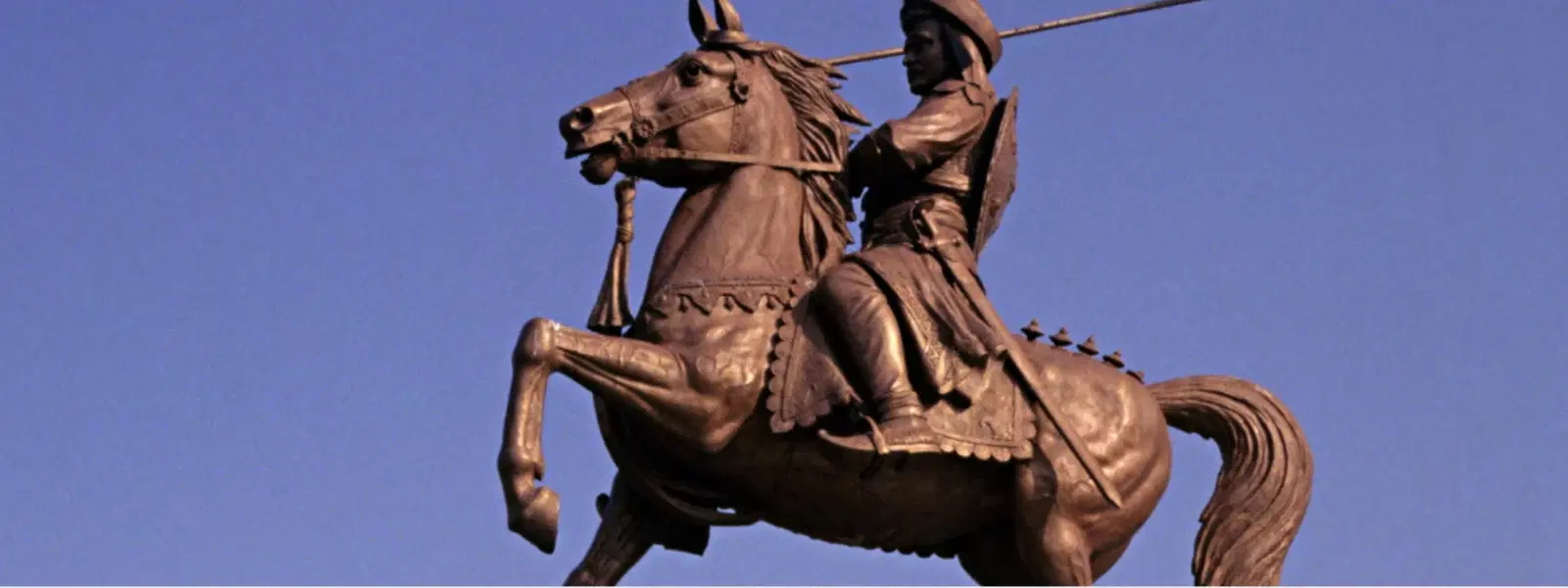
Hotels
•03 min read

Have you ever wandered through a quiet village and stumbled upon captivating bronze sculptures that tell timeless stories? In many corners of India, these art pieces are more than mere decorations; they are a vibrant link to the past and an inspiring display of cultural identity. Today, we explore how villages with bronze sculptures preserve traditions, serve as hubs of artisanship, and offer unique experiences for those seeking an authentic taste of local heritage.
Bronze sculptures have a rich history that spans centuries. Originating in ancient times, these masterpieces have been integral to religious and cultural practices. In many traditional settings, bronze idols and lamps are not only objects of beauty but also hold spiritual significance. Their evolution, marked by meticulous craftsmanship and imaginative artistry, highlights a tradition that balances technique and creative expression. Whether adorning temples or residing in village courtyards, these works continue to inspire awe and reverence.
Villages, with their deep-rooted traditions and strong sense of community, serve as ideal repositories for bronze sculptures. The slower pace of rural life fosters a close relationship with age-old crafts. Artisans work in harmony with nature, often using the lost-wax method—a centuries-old technique that brings each sculpture to life with unique details. The authenticity and charm of these villages attract visitors eager to explore sculpture art in rural areas, making them living galleries of history and heritage.
Nestled in Kerala’s lush landscapes, Kunhimangalam is celebrated for its bell-metal craft. The village is home to skilled artisans who create exquisite bronze lamps and idols that mirror the state’s vibrant cultural legacy. Here, every piece is not just a work of art but a functional object used in religious rituals and daily life, symbolizing divine blessings and cultural pride.
Manesar in Haryana offers a different glimpse into India’s bronze heritage. This village has revealed centuries-old bronze statues that narrate tales of bygone eras. These archaeological finds add a layer of historical significance to the village, enriching its identity as a center for culture and heritage. Visitors often find themselves captivated by the blend of history and artistry found in every bronze creation.

While India treasures its own bronze sculpture villages, inspiration also comes from beyond. Tuscany in Italy, for instance, has recently unveiled archaeological discoveries that parallel the timeless charm of Indian bronze art. These global examples reinforce the universal appeal of bronze sculptures, showcasing how diverse cultures contribute to the narrative of bronze sculpture art.
Sculpture tourism is an emerging trend that invites enthusiasts and casual travelers alike to explore villages with art installations. Wanderers, planners, professionals, and luxury seekers can all find something enchanting in these spaces. Whether it’s outdoor bronze sculptures integrated with natural landscapes or curated public art installations, these villages offer a new way to experience art while on the move. Travelling through such locales not only feeds the wanderlust but also deepens one’s appreciation for the locales’ historical and cultural narratives.
When planning your journey through these artistic havens, consider a few tips: arrive during local festivals to witness live demonstrations of craftsmanship, engage deeply with local artisans to learn about the methods they use, and explore beyond the obvious landmarks. It is also rewarding to support local craftsmanship by purchasing authentic bronze artwork. Such interactions ensure that traditional arts continue to flourish in vibrant communities.
The artistry behind bronze sculptures is a complex blend of science and creativity. Traditional methods like the lost-wax technique remain prevalent in villages renowned for bronze artwork in small towns. Through this process, artisans create detailed sculptures that capture the essence of their subjects, be it divine figures or abstract forms. The skill, passion, and meticulous attention to detail evident in each sculpture reveal a commitment to preserving an art form that has transcended time.
Efforts to sustain bronze sculpture heritage are in full swing across various villages. Workshops, heritage initiatives, and governmental support are all part of a broader movement to keep these traditions alive. Such initiatives not only preserve the art but also boost local economies, offering artisans better livelihoods and ensuring a continuous flow of cultural knowledge. The modern traveler can witness these efforts firsthand, witnessing how tradition and innovation culminate in the preservation of history.

Did you know? The lost-wax technique, used for crafting bronze sculptures, dates back over 6,000 years and is still practiced in villages like Kunhimangalam, Kerala. This method ensures each piece is unique, reflecting the artisan’s skill and creativity.
Kerala is renowned for its bronze sculpture heritage, particularly in villages like Kunhimangalam.
Yes, bronze sculptures are highly valuable due to their craftsmanship, historical significance, and durability.
Artists like Donatello in Italy and traditional artisans in India are famous for their bronze sculptures.
Absolutely! Bronze sculptures are durable and weather-resistant, making them ideal for outdoor installations.
Villages with bronze sculptures offer more than just a glimpse into artistic traditions—they embody a living heritage that enriches both local communities and their visitors. From the intricate techniques of ancient artisans to modern efforts that sustain these traditions, there is much to discover in these cultural havens. Whether you are a keen explorer, a lover of history, or simply someone looking to immerse in captivating art, these villages invite you to experience the beauty of India’s rich cultural tapestry.